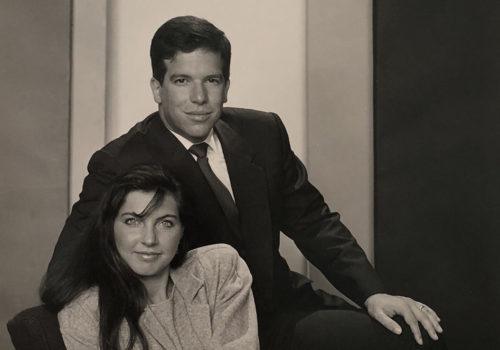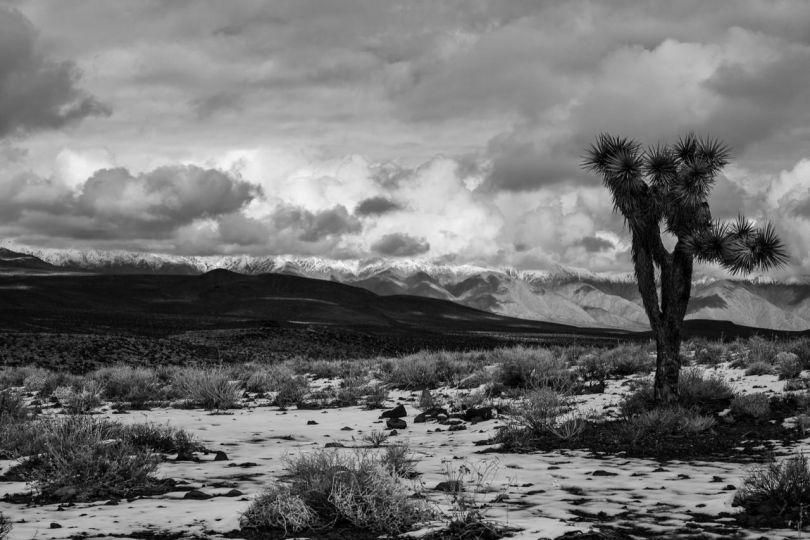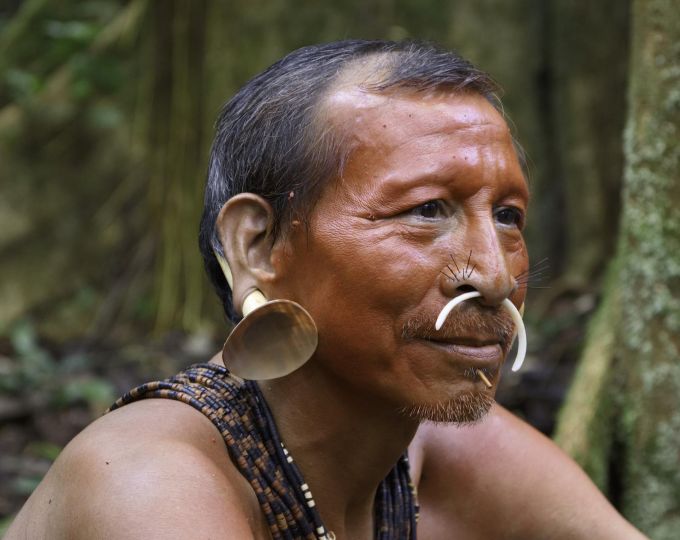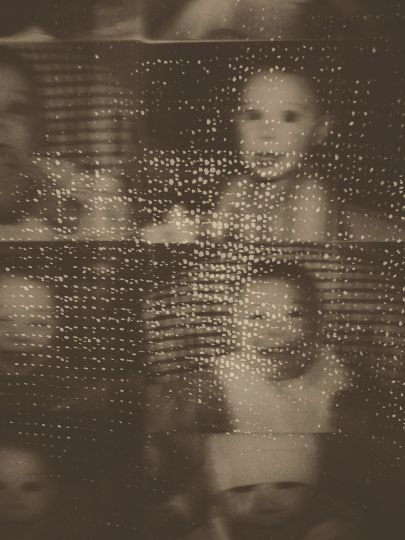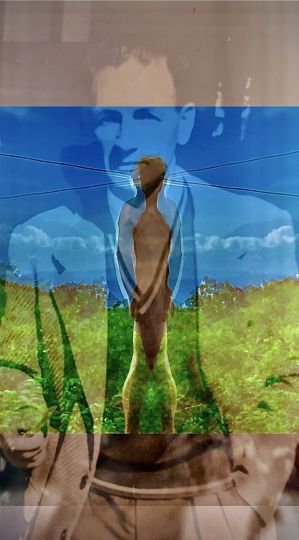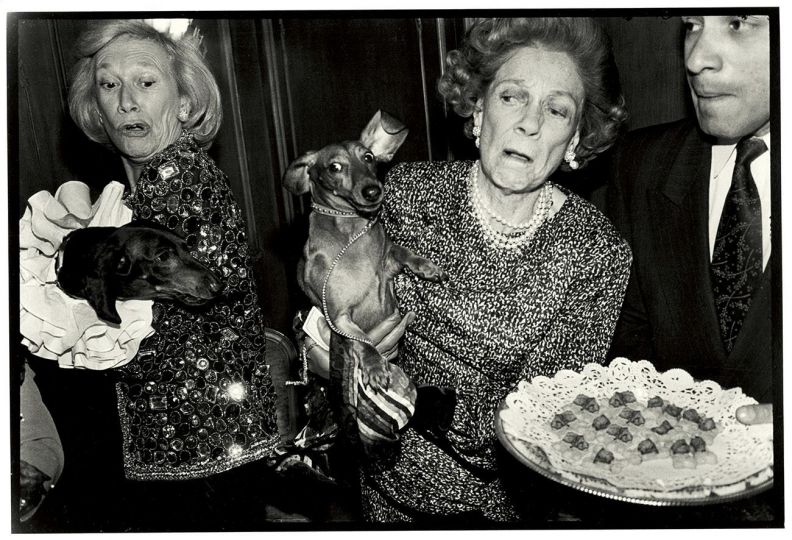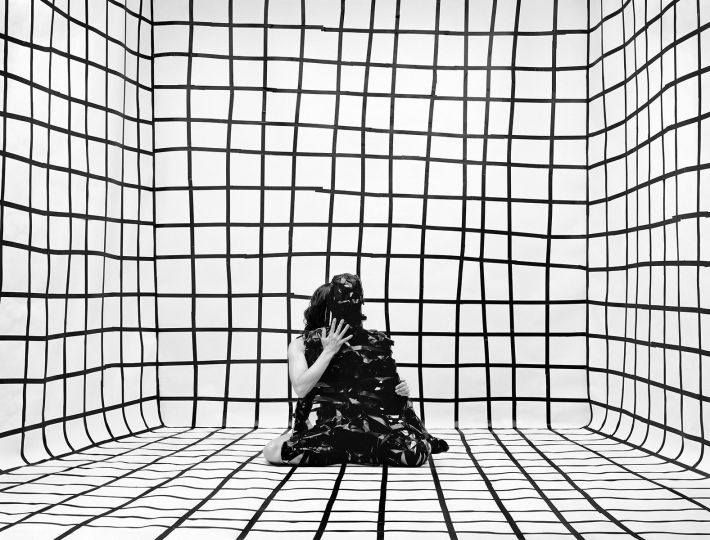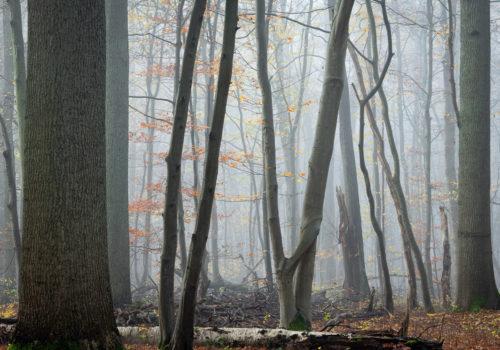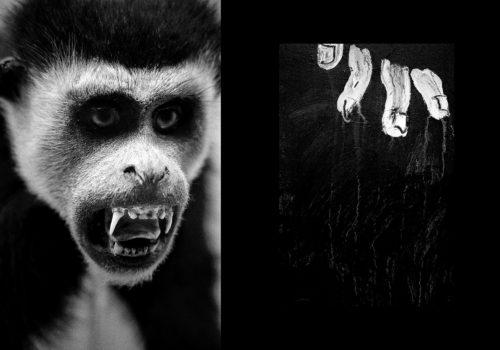In September last year, the J. Paul Getty Museum announced the acquisition of a collection of 209 photographs by the French photographer Eugène Atget. It had been built over 25 years by Dan and Mary Solomon, by carefully adding one masterpiece after another.
The couple prefers to keep a low profile in the photography world but are incredibly active as collectors, curators, publishers, and most significantly as generous donors to over a dozen museums. Among the institutions that have received significant donations from them are The National Gallery of Art, the FAMSF/de Young Museum and The J. Paul Getty Museum.
I spoke to Dan Solomon before The Photography Show and started out by asking when and how he became a collector.
Dan Solomon : I think I was born a collector. As a young child, I collected coins, stamps and baseball cards. When I got to university, I started collecting books. I was working as an English professor at Queens College while working on my PhD at Columbia. Circumstances developed to where I couldn’t continue on that course so I left the academy and went into the commercial real estate world. Every time I made a commission, I would treat myself to a rare book. I began collecting Herman Melville first editions and signed Henry James Association copies. Eventually, at a book dealer’s shop, I came across John Linnell’s copy of The Book of Job, with ‘proof’ engraved illustrations by William Blake. The idea of collecting books with beautiful images fascinated me. A short time later, I was at a book fair and came across an Edward S. Curtis portfolio and a Curtis volume. Photogravures became my entry into collecting photography. Soon I was buying sets of Camera Work and before I knew it, I was collecting individual works of great beauty and historical significance. It’s been very exciting, not just collecting but also curating. Over the years I have curated exhibitions about Edward S. Curtis, Eadweard Muybridge, Alfred Stieglitz and his Circle, The Beauty of the Albumen Print and Surveying the Terrain, an exhibition of contemporary photography, conceptual art and sculpture. I have also had the honor of having one of my photo-based conceptual series – Witness – which explores the nature of photography, knowledge and memory, included in an exhibition curated by Brian Wallis at The International Center of Photography.
On the subject of exhibitions, at the end of last year, the Getty Center showed some of the highlights from the Eugène Atget collection it had acquired from you. What led you to start building it in the first place?
Dan Solomon : When we started collecting, we were told by many people that Atget was the most important figure in the history of photography. We were also intrigued that such an important artist was relatively inexpensive compared to say, Stieglitz, Strand, Weston and Man Ray. We began studying all the books on Atget and then visited the study rooms in all the museums in the United States and Paris that had significant holdings of his work. We looked at thousands of prints and developed a connoisseur’s eye and an engaged amateur’s knowledge of his work and life.
What was the next step?
Dan Solomon : We were inspired by the beauty, quality and intelligence of Sarah Greenough’s Harry Callahan and André Kertész exhibitions at the National Gallery of Art and wanted to do something similar with Atget. Our intention was to build an institutional quality collection of Atget photographs, that it be kept together and that it would spur a reassessment of Atget’s achievement. We wanted to find the finest prints possible. Also, we did not want to duplicate what was in existing major museums so we decided that we would only buy prints that either weren’t in those collections or we would buy when we found better prints. We also tried to represent every series that he worked on, Landscape-Documents, Picturesque Paris, Art in Old Paris, Topography of Old Paris, Saint-Cloud, Versailles, Sceaux, Tuileries, and Environs, as well as great examples of his images of street vendors, shop fronts, sex workers, trees, stairways and gypsy encampments on the outskirts of Paris.
As I understand it, the Getty acquisition was part purchase, part gift.
Dan Solomon : When it became time to place the collection, we were determined that it stay together so to accomplish that, we decided we would make significant concessions to make that happen. The Getty purchased 65 photographs and Mary and I donated a rare and valuable album with 84 photographs along with 60 other prints. Of course, since we are inveterate collectors, we have continued collecting Atget and now find ourselves with another 20 Atget photographs.
The prints are of outstanding quality. Nevertheless, I find Atget unique in that no matter how pale or beaten up a print is, it still somehow speaks.
Dan Solomon : We were gifted a wonderful lesson that speaks to that observation from John Szarkowski the legendary MoMA curator. We wanted to get an exceptional image from his fortification series and bought what we felt was a very good but not great print showing the fortification wall beside a worn dirt path leading towards a group of saplings in the distance. It was beautiful but the highlights were a bit yellow. We were showing about two dozen absolutely perfect Atget prints to John when he was visiting Los Angeles. We came to this one print and started apologizing for it and John said, “Dan, it’s wonderful that you’ve assembled all these amazing prints but never, never pass on or apologize for a print that has such incredible poetry just because of its condition!” And he was completely right of course.
Collectors often say they have matured over the years. Do you feel the same?
Dan Solomon : Most definitely. You grow over time, from exposure to better material, the knowledge you acquire from study and the relationships you build with dealers, collectors, curators and artists. Gradually you develop a finer eye for quality and a sensitivity to history. One of the great impacts that Mary has had on our collecting was that she emphasized early on that rather than merely amassing great amounts of material, we should put our energies and focus into acquiring the very finest pieces that we could find.
Do you always decide jointly when it comes to acquisitions?
Dan Solomon : Mary is incredibly supportive and deeply involved in all aspects of the collection. After all, it is the Mary and Dan Solomon collection. However, if I am being completely honest, I have to confess there were also more than a few times when I made unauthorized purchases, exceeded our budget or brought an extra photograph or two. I would occasionally become obsessed with bringing home the prize!
You mentioned Edward S. Curtis earlier. Let’s backtrack to 2000 and Sites & Structures: The Architectural Photographs Edward S. Curtis, an exhibition and a book. Curtis is famous for The North American Indian so this was an overlooked aspect of his work.
Dan Solomon : We had collected hundreds of photogravures, cyanotypes, silver prints and platinum prints by him. Curtis was somewhat out of fashion and dismissed as an important artist by many of the top museums, galleries and collectors. One day when we were looking at all these works with our friend and mentor, the legendary dealer Simon Lowinsky, he observed that we had many photographs without Native Americans, images of sites and dwellings, ceremonial structures, food caches and gravesites. That conversation led us to assemble a topographic collection of Curtis. We ended up curating an exhibition at the Orange County Museum. Chronicle Books published the book and Andy Grunberg who reviewed photography books for The New York Times named it as one of his top 10 books of the year. It was particularly gratifying that Peter Galassi, then head of photography at MoMA, and Weston Naef who was at the Getty, commented that our work showed that Curtis was a more interesting photographer than they had previously thought he was and that we had expanded their sense of his achievement.
You collect the whole history of photography right up to the present. Can you give me an idea of the size of the collection?
Dan Solomon : We have built several collections. One of the most important ranges from early calotypes by Gustave Le Gray and Édouard Baldus to Irving Penn and Robert Adams and on to contemporary artists like Alec Soth, Idris Kahn, Madoka Takagi and Lorna Simpson. It’s a collection of over 1200 photographs that is now at the National Gallery of Art in Washington D.C. While our collecting has many of the recognized names, we take a special joy in collecting lesser-known figures and helping bring them into the canon. Artists like Henry Bosse, Thomas Johnson and James F Ryder, who came to the market at Sotheby’s under the guidance of Denise Bethel and Chris Mahoney. We acquired them either directly or through Simon Lowinsky. We have also acquired collections of photographs from The Gay Essay by Anthony Friedkin, and The Hollywood Suites by Steve Kahn. We gave these groups to the de Young Museum and each collection became a monographic exhibition and catalog.
Is it ever hard to let something go? Are there donations that you now regret?
Dan Solomon : Well, there are some photographs I wish that I still had, or had promised as gifts so that they would still be on our walls. I deeply miss a beautiful Désiré Charnay photograph, of a mother and her three children in Madagascar that tells us all that we need to know about motherhood and dignity. There was a Muybridge albumen print with 24 frames of a horse in motion which included the frame where all four of the horse’s hooves leave the ground and the horse takes flight, that perfectly ties together art and technology and prefigures the invention of cinema. The thing we miss the most is a sublime six-part seascape by Robert Adams that hung over our bed and speaks so eloquently to the redemptive power of light. We also miss a beautiful Atget photograph from the Parc Saint-Cloud which we acquired from the MoMA deaccession sale in 2002. It was the actual print that was used to create the poster for the first Atget show at MoMA in 1969. One last regret is a Lewis Baltz from his prototype series of a strawberry field covered in white plastic to protect against the frost, which is modern, minimal and mysterious. They are all at the National Gallery of Art now. There is also an incredible arrowroot print of statues and trees in the Trianon that incorporates Atget’s shadow and camera which is now at the Getty.. As it is a photograph in which nothing is clearly described it is ultimately a picture of light and a picture of nothing.
Still, you must take a great deal of pleasure in the donations.
Dan Solomon : It’s perhaps somewhat similar to watching your children grow up and go out into the world; it just becomes time to let go. We still have the great joy of visiting them. We can go to the study rooms at the National Gallery of Art, The Getty and the other institutions whenever we miss our photographic children. It was a tremendous honor when we were named Benefactors of the National Gallery of Art and it was a thrill to watch Nick Benson a third-generation stone mason, and artist in his own right, carve our names into the marble wall of the lobby of the Constitution Avenue entrance to the museum. We love to inspire other collectors to donate and one of the things we are incredibly proud of is when our good friend Stephen Stein told us he was inspired by our example and wanted to follow in our footsteps. He’s now on the wall alongside us. After the Atget collection was placed, I turned to Mary and said “What are we going to do next?” We decided that we would try and help other people do what we have done, and made a list of collectors we knew who were older than us. I started calling around and asking them what their plans were for their collections. This led us to set up an advisory business. We are working with many wonderful collectors helping to guide their collections to new homes.
You have been a regular visitor to The Photography Show over the years.
Dan Solomon : We started attending when the fair moved to the Park Avenue Armory. It has always been our favorite location and we’re so excited that the fair is returning there this year. The fair has been a great source for us as collectors. We always come home with something special from our various friends; Hans Kraus, Edwynn Houk, Chuck Isaacs, David Winter, and so many others. A couple of special things that come to mind that we acquired at AIPAD include a heavily retouched press photograph by Eugene Smith, of a soldier in Saipan holding a near-dead baby freed from a cave filled with dead bodies which we found at Joe Tartt’s booth. Two of the most important photographs in our Atget collection were acquired at AIPAD: a surreal reflection and view into the window of a fine men’s clothing store made in 1925 on the original Weyhe Gallery mat which we brought from Howard Greenberg who owned it in partnership with Paul Hertzmann; the second was from a rare series on sex workers, of three women framed in the doorway of a brothel which we brought from Mack Lee’s Gallery who owned it with Willie Schaeffer.
Collecting photography is not just about the acquisition of works. It’s also about the people and the community.
Dan Solomon : I agree and during the pandemic, we lost so many wonderful friends, including Dan Greenberg, Steven Cohen, Chris Cardozo and Daniel Wolf, not just to COVID, but some to natural causes. I remember thinking, “Gosh, I wish I had one more opportunity to speak to each of them.” We started reaching out to collector friends, dealers, curators, artists and other people we’ve met in the Art World. We’d call for no reason other than to say hello and most were very pleased to hear from us. On one of the calls a friend made the sweetest observation: “We start out collecting photographs and we end up collecting friends.”
Collecting is quite a complex activity.
Dan Solomon : Yes, and people often ask us why we collect. For me, there are many reasons: to find and preserve rare and beautiful objects of consequence. Another of the joys of collecting is the creativity of putting together visually compelling and fascinating groups of images. Finally, while collecting is ultimately a futile act of railing against one’s mortality, the act of giving to museums does add to our cultural heritage and leaves a mark that we were here for a short while. It is something we leave behind. It’s what remains.
Michael Diemar
This article originally appeared in the AIPAD Catalogue sponsored by MUUS Collection.
The Photography Show presented by AIPAD
April 25 – 28, 2024
Park Avenue Armory
643 Park Ave
New York, NY 10065
www.aipad.com

